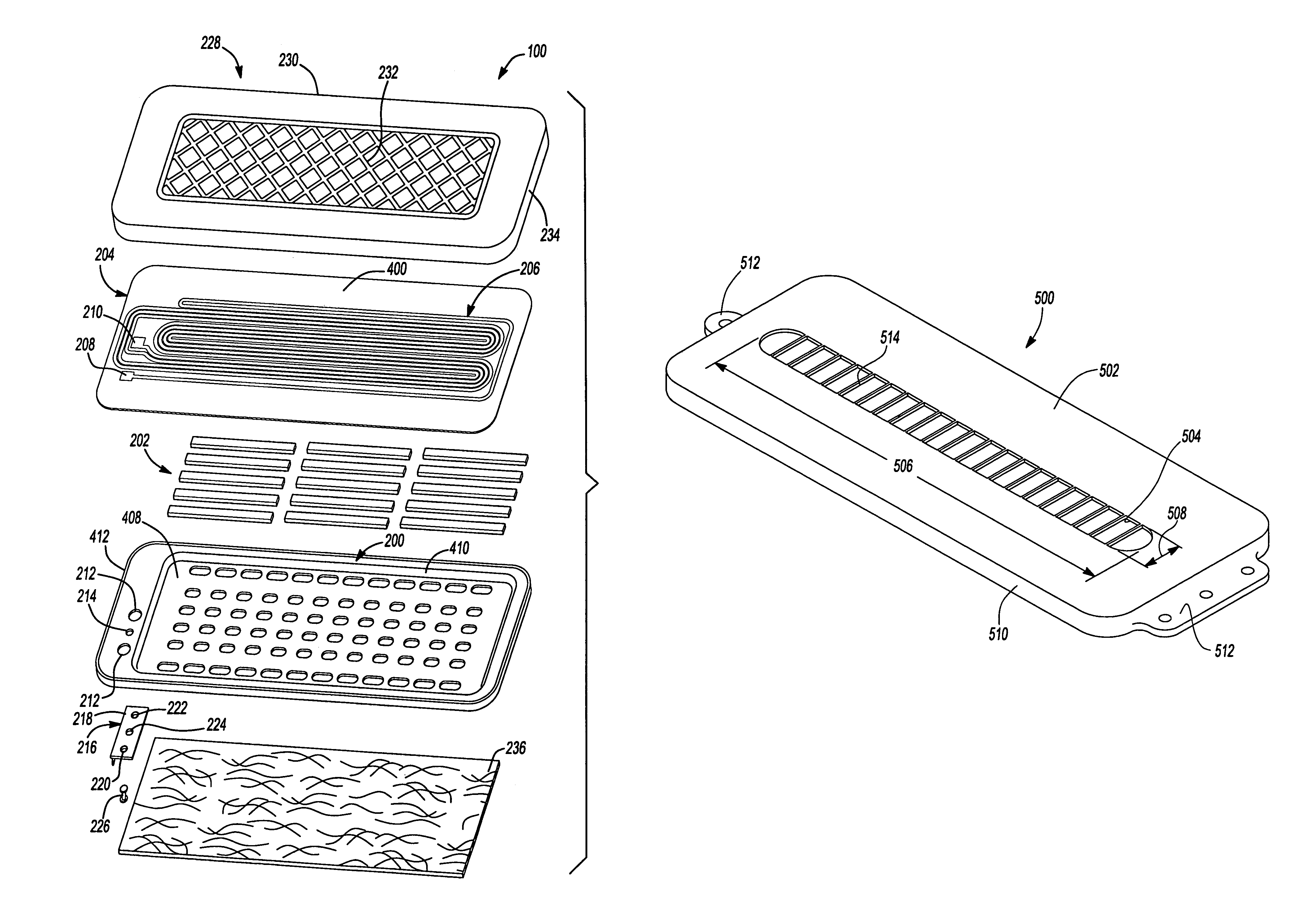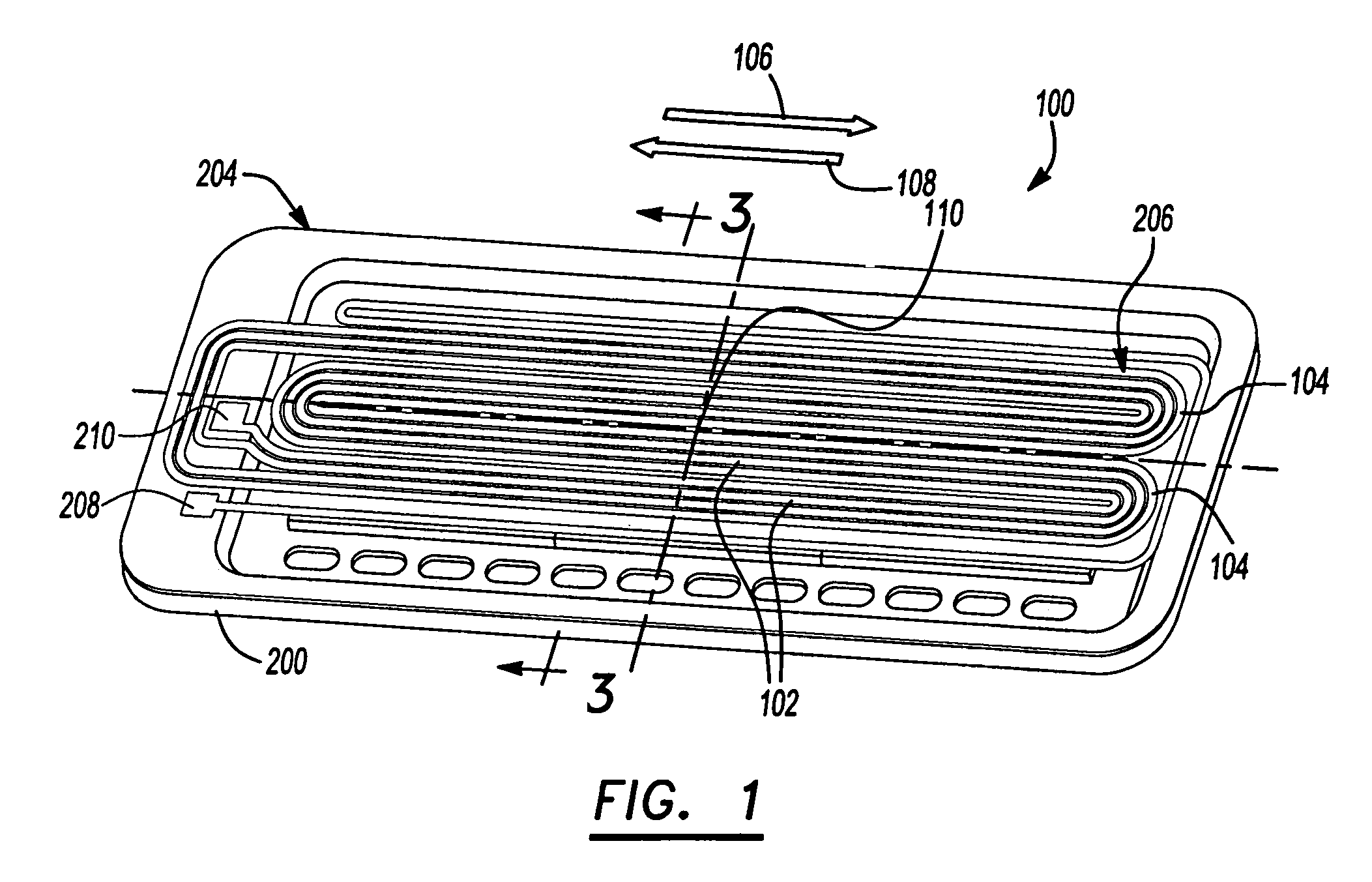Acoustic lens system
a technology of acoustic lens and acoustic beam, which is applied in the direction of loudspeakers, instruments, diaphragm construction, etc., can solve the problems of presenting design challenges, loudspeakers may not be positioned or oriented in a manner, and the use of loudspeakers, so as to reduce the radiating dimensions of the diaphragm, effectively reduce the radiating dimensions of the high-frequency beam, and widen the high-frequency
- Summary
- Abstract
- Description
- Claims
- Application Information
AI Technical Summary
Benefits of technology
Problems solved by technology
Method used
Image
Examples
Embodiment Construction
[0033]FIGS. 1-4 illustrate a flat panel loudspeaker 100 that includes a frame 200, a plurality of high energy magnets 202 and a diaphragm 204. Frame 200 provides a structure for fixing magnets 202 in a predetermined relationship to one another. Magnets 202 may be positioned to define five rows of magnets 202 with three magnets in each row as illustrated. The rows are arranged with alternating polarity such that fields of magnetic flux are created between each row. Once the flux fields have been defined, diaphragm 204 may be fixed to frame 200 along its periphery.
[0034]FIG. 4 illustrates a diaphragm 204 that includes a thin film 400 having a first side 402 and a second side 404. First side 402 is coupled to frame 200. An adhesive 406, such as an adhesive that is curable by exposure to radiation may secure the film to the frame 200. To provide a movable membrane capable of producing sound, diaphragm 204 is mounted to the frame in a state of tension and is spaced apart a predetermined ...
PUM
 Login to View More
Login to View More Abstract
Description
Claims
Application Information
 Login to View More
Login to View More - R&D
- Intellectual Property
- Life Sciences
- Materials
- Tech Scout
- Unparalleled Data Quality
- Higher Quality Content
- 60% Fewer Hallucinations
Browse by: Latest US Patents, China's latest patents, Technical Efficacy Thesaurus, Application Domain, Technology Topic, Popular Technical Reports.
© 2025 PatSnap. All rights reserved.Legal|Privacy policy|Modern Slavery Act Transparency Statement|Sitemap|About US| Contact US: help@patsnap.com



